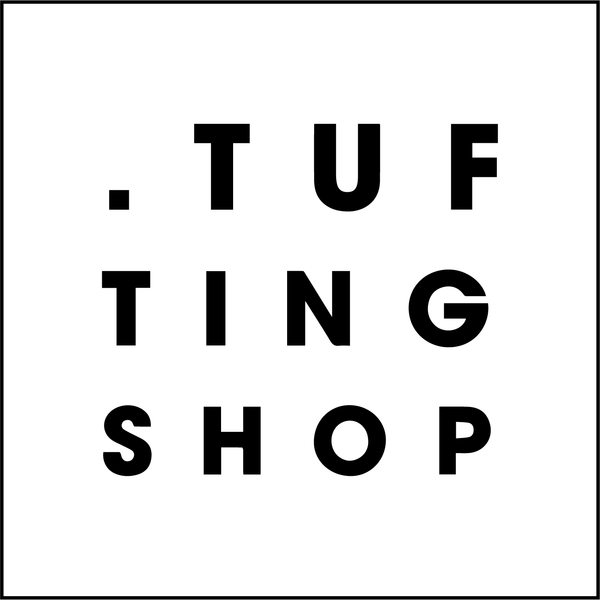
The ultimate guide to finish your hand tufted rugs
Share
How to finish your hand tufted rugs depends on what product you need in the end, and then you do your work accordingly. Whether you want to hang it on the wall as a unique aesthetic piece or need it as a rug on the floor, or want to enjoy it as a garment.
To finish your hand tufted rugs depends on two things:
- Glue
- Backing
Here are some steps, and by following them, you can efficiently get your desired piece of work.
Glue the loom and let it dry.
Apply the glue while it’s stretched on the frame as it will help stabilize the rug itself and maintain its shape, and it will not curl when you take it off. If you have a big rug it is okay to take it off before glueing, but small shapes will definetely curl up.
There are a couple of different ways how to apply glue.
- With a brush; If the glue is thin enough, you can apply it with a brush
- Palette knife or scraper; If the glue has a good consistency and is not thin enough, you will apply it with a knife palette. Here you have to make sure that every single section of the rug is completely covered. After the entire carpet is covered in the glue, you let the glue dry, and once that’s completed, you can cut and pull it off the loom.
Type of glue
The type of glue you use on different products varies accordingly, as one glue cannot fix all kinds of pieces. For example:
Wall pieces
For a wall piece, Elmer’s or PVA glue is excellent. Elmer’s glue is stiff and is applied with a brush on the loom. After the glue dries, you can cut it in your desired shape and mount it on the board and hang it on the wall as a decoration piece. It is super easy, and this is great for medium to large work.
Rugs or Garment
For a rug, you need something else, like latex. The works perfect for the floor. It remains flexible, and is very durable.
Backing
When you are done with glue, the next step is backing. You may or may not need a backing as it is mentioned below:
Wall piece
There is really no backing necessary if you are doing a wall piece. You can glue it on a piece of wood or cardboard to make sure its stays in shape.
Rug
For a rug piece, you need backing, and it has three different options.
- Woven cotton polyester backing: It is a perfect, protected backing, and it does not show dirt very quickly.
- Recycled felt polyester backing: It is durable and results in quality outwear. It is resistant to abrasion, and its characteristics, such as great isolation and retains shape.
- Non-slip backing: It has felt on one side and non-skid or rubber backing on the other side. It’s really good for the areas where you do not want the rug to be able to slide oveer the floor. It helps it keep in one place.
Garment
The backing is also needed for a garment too such as a jacket lining
How to apply glue and backing?
It’s a two-stage process, and you have to apply it with great care and take some precautions. Stage one is actually gluing it on the loom and letting it dry, and then after it’s dry, just cut it.
Then there is stage two, which is backing. So just as an example for backing, use a spray adhesive; a contact adhesive. Contact adhesive has an advantage; it basically sprays two sides, and then once it gets tacky, you stick those together.
If you do not want to get your table sticky, use tapes on all the sides of your loom and then apply the spray glue over the whole surface. After you are done with it, remove the tapes because you do not need them anymore.
Now you can do your backing; cover every piece and area and do not miss any section. Take your rug and carefully drop it down on the backing. Turn it upside down and rub it all the way in so it dries pretty quick, resulting in the pretty thick stuff. If you want softer stuff, use two layers of backing or use a thicker backing in the first place.
Binding
Trim down the edges, and close the borders by applying binding; otherwise, it will break down. It also has a couple of options such as:
- Twill tape binding
- Serge binding
Twill tape can be easily glued on, like the backing. Srging is however a much more exstensive process. Serging is binding it with wool and a needle all around the edge. Some carpet stores offer it as a service.
Serging works best for odd shaped rugs

Twill tape is great for more straight shapes


